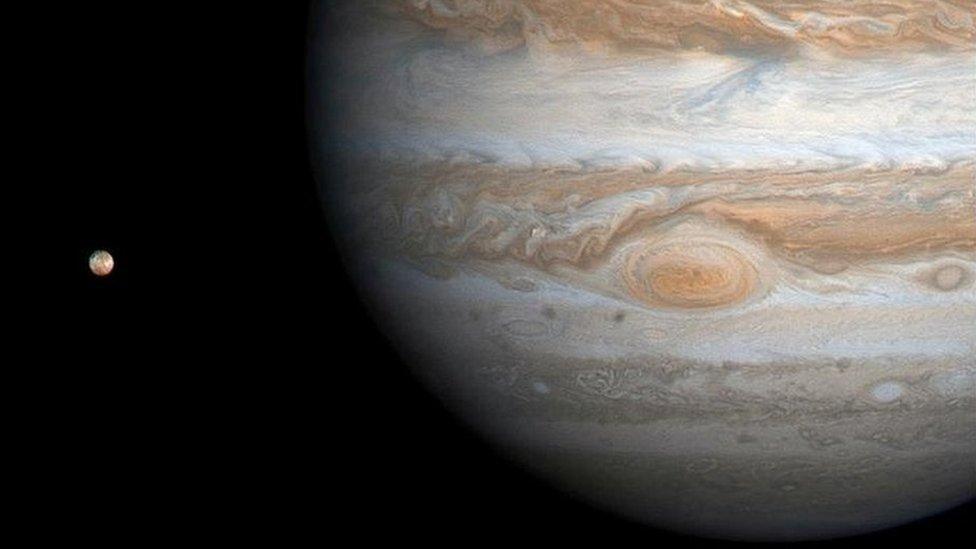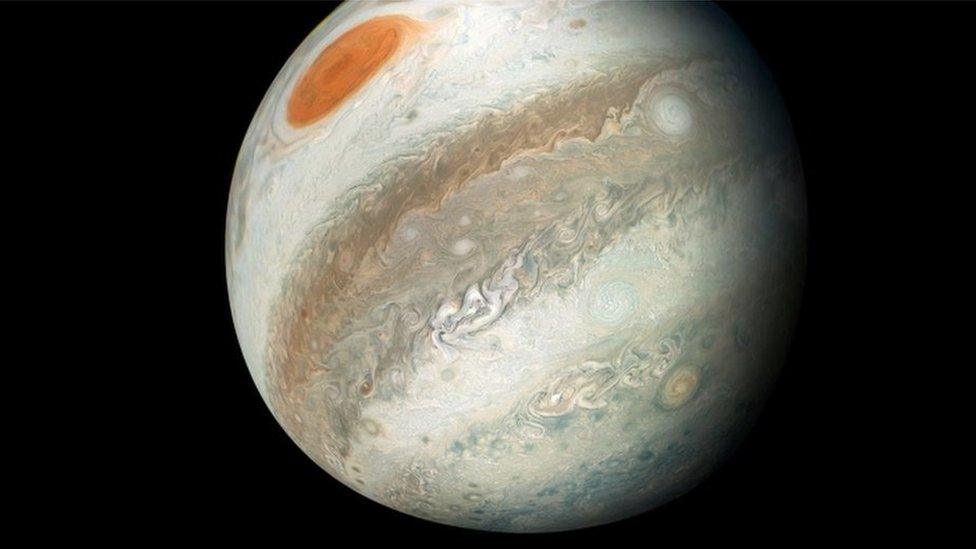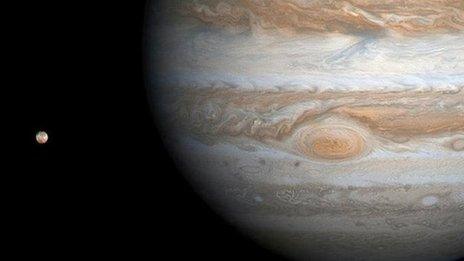Jupiter: Planet's Great Red Spot is bigger and deeper than first thought
- Published
- comments

Jupiter and its biggest moon Ganymede which is just less than half the diameter of Earth
NASA have been taking a closer look at Jupiter's famous storm, the Great Red Spot, and it's made a rather surprising discovery.
The monster storm, which is bigger than the size of Earth, is larger and deeper than scientists first thought.
Researchers say the Great Red Spot plunges around 200 to 300 miles below the planet's cloud tops, based on measurements obtained by NASA's Juno spacecraft.
The data is giving scientists studying the solar system's largest planet, a 3D picture of Jupiter's atmosphere for the first time.

Jupiter's Great Red Spot can be seen clearly in this picture taken by NASA's Juno spacecraft
What did scientists find?
Since it entered Jupiter's orbit in July 2016, Juno has orbited - or flown around - Jupiter once every 53 days.
The spacecraft uses a number of onboard instruments to peer beneath Jupiter's cloud tops.
In 2019, NASA's Juno spacecraft flew directly over the Great Red Spot, which is about 10,000 miles wide, to find out how deep the storm extends beneath the visible cloud tops, and scientists are now revealing what they discovered.
Despite the storm shrinking in size, they found the Great Red Spot to be much deeper than they first thought.
NASA scientist Marzia Parisi said, "The Great Red Spot is as deep within Jupiter as the International Space Station is high above our heads."
Jupiter is the largest planet in our solar system - it's so big you could fit all the other planets inside it!
Lead scientist Scott Bolton, from Southwest Research Institute, also said there might not be a hard cut-off point at the bottom of the storm.
"It probably fades out gradually and keeps going down."
What else has Juno found?
Juno will orbit the giant gas planet Jupiter
Jupiter is known for its distinctive belts and zones - white and reddish bands of clouds that wrap around the planet.
Strong east-west winds moving in opposite directions separate the bands.
Juno previously discovered that these winds, or jet streams, reach depths of about 2,000 miles.
NASA announced earlier this year that it was extending the Juno mission until 2025.
The spacecraft will conduct close flybys of Jupiter's moons - Ganymede, Europa, and Io - as well as the first exploration of the faint rings that circle the planet.
- Published18 September 2021
- Published14 July 2011

- Published14 September 2021

